The Karl Troop Cross was instituted on 13 December 1916 by Emperor Karl. It was was awarded up until the end of the First World War to all troops (including militia), regardless of rank, who had served in the field for a minimum of twelve months and who had taken part in a battle. Between 1 July 1917 and 30 June 1918 approximately 651,000 crosses were struck.
The medal was made up of a zinc cross pattée set on a laurel wreath, the design of which was based on the Army Cross of 1813-1814, usually known as the Cannon Cross. The obverse bears the Latin inscription GRATI PRINCEPS ET PATRIA, CAROLVS IMP.ET REX (grateful prince and country, Karl Emperor and King). The reverse depicts the Austrian and Hungarian imperial crowns above the letter C, for Carolus, with the inscription VITAM ET SANGVINEM (with life and blood) and the date MDCCCCXVI (1916). The cross was worn on the left chest suspended from a red ribbon with alternate red and white horizontal stripes on the outer edges.
Major Josef Kolbe was probably awarded the Karl Troop Cross in 1918, after his return from captivity in Italy.
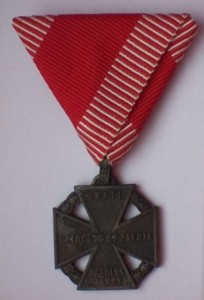 | 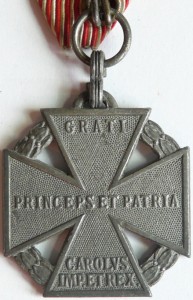 | 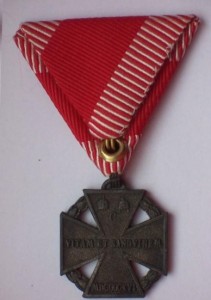 | 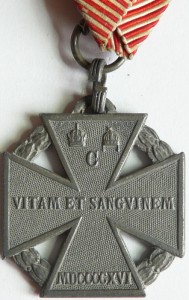 | 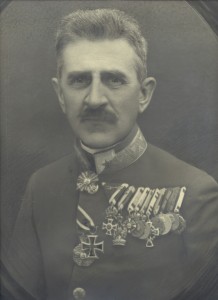 Karl Troop Cross (4th from right) |
Sources:
http://en.wikipedia.org/wiki/Karl_Troop_Cross
http://de.wikipedia.org/wiki/Karl-Truppenkreuz
